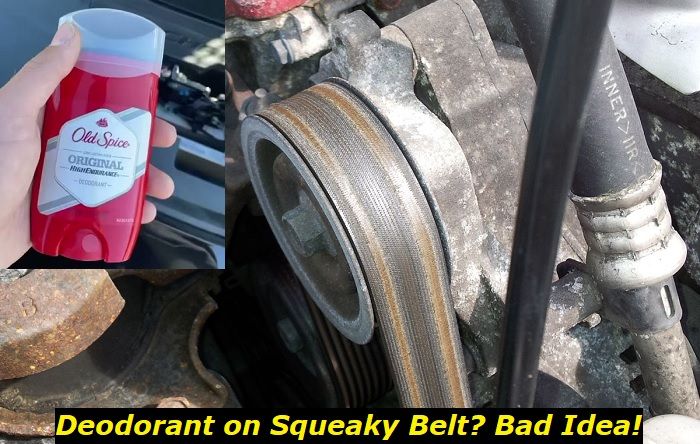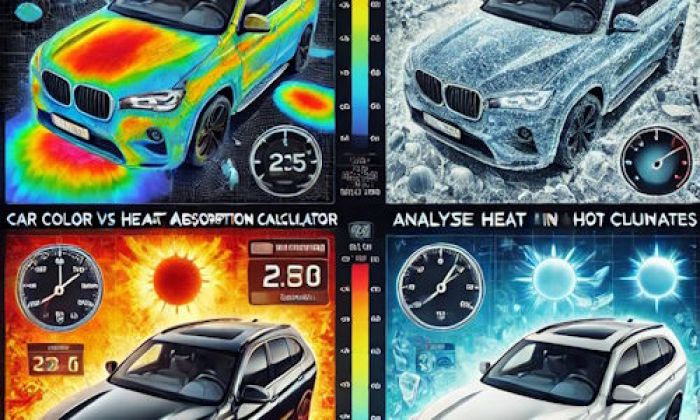The Cadillac 2.0L turbo engine (LTG EcoTec) is a well-received product from GM that saw many applications in autos. It is known for its use in the Cadillac XT4, XT5, XT6 CT4, and CT5. Others such as the GMC Acadia and Chevy Blazer also utilize it. This in itself speaks a lot about the quality of the engine. Add to that the overall positive reviews of owners.
There are some notable minor issues with the engine that can be attributed to regular wear and tear as well as neglect from users, but none is as serious as its overheating issue. In this article, we will take a look at the common causes of this problem in Cadillac cars with the 2.0L turbo engine.

Key facts and my opinion about the engine
- Production years: 2012-now
- Average lifespan of LTG Ecotec: 160,000-200,000 miles
- Fuel supply type: direct injection
- Power range: 230-279 hp
- Fuel efficiency: good
- Engine block material: aluminum
- Engine reliability score: medium
- The most common problems: weak pistons, carbon buildup on intake valves, very weak timing chain, oil leaks
Most Common Problem in the Cadillac 2.0L Turbo Engine
In general, the different generations of the Cadillac 2.0L turbo engine have been praised for their performance, fuel efficiency, reliability, and longevity. Many longtime owners have stated that they haven't encountered any major problems with their engines aside from their regular or reasonable wear and tear. However, upon further diving into forums and reports as well as the personal accounts from other owners of cars equipped with the engines, the most common complaint about them have something to do with overheating.
Overheating is a very general problem that can be triggered by a variety of issues from the internal components of your car. So, let's look at the most common key contributors to this issue in Cadillac cars as well as the direct solutions for each in this section.
1. Coolant System Issue
If something is going wrong with your vehicle's coolant system, it can cause the engine to overheat and get damaged. The coolant system is made up of several components so the first thing that you have to do is identify the specific cause of the problem.
- Check the coolant level in the radiator. If it's low, add more coolant until it reaches the full line.
- Inspect the radiator hoses for any leaks or damage. If there are any damaged hoses, replace them with new ones.
- Check the cooling fans to make sure they're working properly. If not, replace them with new ones.
- Inspect the water pump for any leaks or damage. If there are any damaged parts, replace them with new ones.
- Examine the thermostat to make sure it's working properly. If not, replace it with a new one.
- Lastly, check the radiator cap to make sure it's tight and functioning properly. If not, change it with a new one.
Scroll down in the next items to get a more comprehensive idea of how to add engine coolant or antifreeze and how to replace the defective parts of your coolant system.
2. Low Coolant/Antifreeze Level
A low coolant level can bring increased friction in many moving parts of your engine, including the head gasket, water pump, cylinders, and pistons. This will most likely generate overheating on the directly affected parts as well as the other components in their vicinity.
Adding coolant to your Cadillac 2.0L turbo engine is a fairly simple task that can be easily completed in just a few minutes. Here are the steps you'll need to follow:
- Locate the coolant reservoir. This is typically positioned near the front of the engine bay and will have a white or yellow cap with "coolant" written on it.
- Remove the cap from the reservoir and add coolant until it reaches the "full" line. Make sure not to overfill, as this can cause further issues with the engine's cooling system.
- Replace the cap on the reservoir and start up your engine. Let it idle for a minute or two, then turn it off and allow it to cool completely.
- Recheck the coolant level in the reservoir and add more if necessary. Once the proper level has been reached, replace the cap and you're all set!
3. Damaged Belts or Hoses
Replacing the defective belts and hoses in your Cadillac 2.0L turbo engine is a relatively easy task that can be completed in a few hours using these steps:
- Detach the negative terminal of the battery as a safety precaution to avoid electrical shorts.
- Locate the damaged belt or hose. In most cases, it will be visibly frayed or leaking.
- Using a wrench or pliers, loosen the tensioner pulley so that you can remove the old belt.
- Remove the old belt or hose and discard it.
- Install the new belt or hose, making sure to route it correctly.
- Adjust the tensioner pulley so that the new belt is tight.
- Reconnect the negative battery terminal.
- Start the engine and check for any leaks.
4. Cooling Fan Not Working
Before proceeding, make sure that there are no problems with the wiring of your fan. Check the connections to make sure they are secure and tight. Check the car for busted fuses for a good measure. If so, replace it with a new one. But if you're quite sure that the issue is rooted in the cooling fan, here are steps to replace it:
- Park the car on a level surface and turn off the engine. Allow the engine to cool down for at least an hour before starting the work.
- Locate the cooling fan assembly in front of the radiator, which is normally held intact by three bolts.
- Use a wrench to remove the three bolts holding the cooling fan assembly in place.
- Carefully remove the old cooling fan and discard it appropriately.
- Place the new cooling fan in the same position and bolt it in place using the three bolts.
- Close the hood and start the car to test the new cooling fan.
5. Water Pump Failure
Assuming that you have all the necessary tools and parts, the process of replacing the water pump on a Cadillac 2.0L turbo engine is relatively straightforward. Here are the basic steps:
- Disconnect the negative battery terminal to avoid any potential electrical issues.
- Drain the coolant by removing the lower radiator hose and opening the petcock valve.
- Raise and support the vehicle so that you can easily access the water pump.
- Disconnect all of the relevant water pump pulleys and electrical connectors.
- Remove the water pump bolts and then carefully remove the old water pump.
- Clean off any gasket material from the engine block and then install the new water pump.
- Reconnect all of the pulleys and electrical connectors, and then lower the vehicle.
- Fill up the radiator with coolant and then start the engine to check for any more leaks.
6. Faulty Thermostat
If your Cadillac 2.0L turbo LTG engine is having thermostat issues, it's important to get them fixed as soon as possible.
- Once you've narrowed down the issue to the thermostat, it's time to start the repair process. Begin by disconnecting the negative battery terminal to prevent any electrical shocks.
- Next, locate the thermostat housing and remove it using a wrench or socket. Be careful not to strip the housing in the process.
- With the housing removed, you should be able to see the thermostat itself. If it's damaged or defective, simply replace it with a new one. If not, then you can simply clean it and reinstall it.
- Finally, reassemble everything and reconnect the negative battery terminal. Start up your engine and check to make sure that the temperature gauge is working properly. If not, then you may need to bleed the cooling system.
7. Worn Radiator Cap
If your radiator cap is causing the coolant to spill, it may have a worn valve or damaged seals. The only way to go about this problem is by replacing it.
Replacing the radiator cap is a pretty straightforward process. Simply buy one that is within the specification of your car in any auto shops near your place, and replace the old one with it.
Longevity
The Cadillac 2.0L Turbo inline-four engine is a reliable and powerful engine option for Cadillac, GMC, and Chevy vehicles. It offers excellent fuel economy and plenty of torque, making it a great choice for drivers who want a fun-to-drive car that doesn't sacrifice performance. The engine is also backed by a robust warranty, so you can be confident in its long-term reliability.
As for maintenance, the 2.0L Turbo inline-four engine is relatively low-maintenance and should be able to last for many miles without needing major repairs. Although there are no official figures from Cadillac or GM regarding the longevity of the unit, some Cadillac car owners claim that they were able to stretch the life of their engine for over 200,000 miles before needing an overhaul or replacement. It should be noted though that the numbers may vary depending on many factors such as the vehicle model using the engine and the driving habits of the users.
Engine Specs
The 2019 version of the Cadillac 2.0L Turbo inline-four engine is a powerful and efficient choice available in the base trim of the present Cadillac CT5. It features an advanced turbocharger system that helps it deliver excellent performance, while still achieving great fuel economy numbers.
This engine produces 237 horsepower at 5,000 rpm and 258 lb-ft of torque at 1,500 to 4,000 rpm, making it an excellent choice for those who want plenty of power on the open road. It also gets good fuel economy numbers, with an EPA-estimated 26 mpg in the city and 30 mpg on the highway.
Conclusion
The Cadillac 2.0L Turbo inline-four engine enjoys overwhelmingly positive reviews from owners. However, the most common complaint about it is overheating, which can be caused by one or many issues within the engine bay. We hope that this article has provided you with effective ways on how to pinpoint and resolve the problem as quickly as possible.
About the authors
The CarAraC research team is composed of seasoned auto mechanics and automotive industry professionals, including individuals with advanced degrees and certifications in their field. Our team members boast prestigious credentials, reflecting their extensive knowledge and skills. These qualifications include: IMI: Institute of the Motor Industry, ASE-Certified Master Automobile Technicians; Coventry University, Graduate of MA in Automotive Journalism; Politecnico di Torino, Italy, MS Automotive Engineering; Ss. Cyril and Methodius University in Skopje, Mechanical University in Skopje; TOC Automotive College; DHA Suffa University, Department of Mechanical Engineering






Add comment